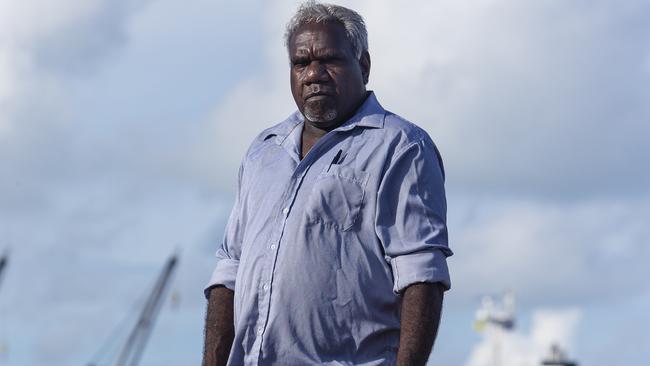China backing for Aboriginal Winchelsea island mine
The Aboriginal owners of one of Australia’s remotest islands are on the cusp of starting their own Chinese-backed mining venture.

The Aboriginal owners of one of Australia’s remotest islands are on the cusp of starting their own Chinese-backed mining venture after going into business with a mainland investor they met through the controversial Chinese operator of Darwin Port.
Winchelsea Mining this month expects to receive final approvals from the Northern Territory government to begin drilling on Winchelsea Island, a tiny uninhabited outpost in the western Gulf of Carpentaria.
The NT government in January granted Winchelsea Mining, a joint venture between the Anindilyakwa Advancement Aboriginal Corporation and AUS China International Mining, an exploration licence over about 20sq km of manganese-rich Winchelsea Island.
AAAC was established by the Anindilyakwa Land Council, a commonwealth statutory authority, after chairman Tony Wurramarrba and chief executive Mark Hewitt visited China in 2016 with a delegation organised by NT Chief Minister Michael Gunner and sponsored by Darwin Port operator Landbridge.
Mr Wurramarrba was the only Aboriginal person on that trip. While in Rizhao, the Chinese city home to Landbridge’s billionaire owner Ye Cheng, Mr Wurramarrba and Mr Hewitt met Yu Dongfang, a wealthy businessman who Mr Hewitt told The Australian now resides in Sydney.
Mr Hewitt said Mr Yu had so far invested about $7 million in Winchelsea Mining under a 60-40 partnership in which AAAC held the majority stake and had contributed to the cost of exploration permits and other approvals.
A second phase of exploration, costing upwards of $50m funded through offtake agreements, was likely to begin in about a year if phase one were successful. The first manganese ore could potentially be exported as soon as 2022.
However, Mr Hewitt said establishing Winchelsea Mining had shown him the Aboriginal Land Rights Act (NT) — which the ALC is responsible for administering — needed “some serious reform for it to be useful for Aboriginal people”.
“Under ALRA, it’s not contemplated that you are anything other than a passive recipient of royalties. It’s not contemplated under ALRA that traditional owners could become applicants to mine on their own lands,” he said.
Land rights and native title laws had “done their work” and their administrative bodies needed to turn to development, Mr Hewitt said. “The new frontier for land councils is ‘what are we actually going to do with this land? How are we going to develop this land?’, when we’ve got outdated legislation that only regards us as passive recipients,” he said.
“If you want to have a joint venture to do fracking on your block, you are dealing with this bullshit environment where you’ve got to apply to yourself.”
The ALC was funded to employ 24 staff but needed about 110 to administer the roughly $80m in royalties it already received annually from South32s long-standing GEMCO Mine on Groote Eylandt.
Groote Eylandt has among the highest average incomes and yet the lowest living standards in the nation.


To join the conversation, please log in. Don't have an account? Register
Join the conversation, you are commenting as Logout